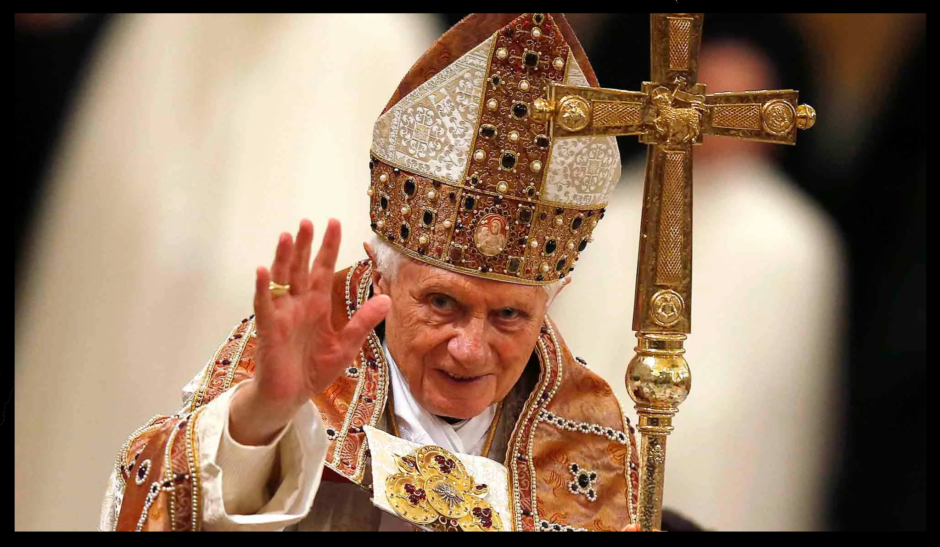My friend Fr. Ray Blake, PP of St. Mary Magdalene in Brighton following the conference at Merton College, Oxford, had a very good comment about the TLM:
I love the constant call of Dominus Vobiscum and response Et cum Spiritu tuo, it is almost as if the priest and congregation need the reassurance of one another as they enter the divine presence. I love the symbolism of the celebrant being dragged about the altar by his assistants: being held at the altar lest he should flee. I love the of the idea of the scriptures being proclaimed as if the most important thing is hearing the voice of Christ and the actual meaning of the texts, important as it is, is secondary.
One of the most teaching things was Bishop McMahon of Nottingham celebrating Vespers, he knew more or less what to do but in practice had to be guided by his assistants. There was an moment were obviously someone was saying to him, “Turn, turn around, no, not to the left, turn to the right”. What it was saying, seemed to be that even a Bishop is subject to the liturgical rules. We give ourselves to the Liturgy, so we might be conformed to the mind of the Church, rather the Liturgy being given to us, so that we might do with it what we want.
Well done.
There is a profound point of the constant call and response in the TLM.

































Thank you for sharing this. As I lived in England for many years, I am thrilled at the progress of TLM across the island. The Mass is greatly loved in Auld Blighty. The objectivity of the rubric reminds us that we are all under obedience to a higher authority, and that rank and personalities mean nothing in the Presence of God. How deep are the riches of the spirituality of the TLM and the traditional liturgy of the hours.
Are there photos of this event?
Bp. McMahon’s submission to the rubrics and (critically) to the guidance of his MC is wholly admirable. A man from Germany, who had grown up in the Pontifical environment just before the war once told me that he had once misguided a bishop during a pontifical mass. Upon returning to the sacristy he was corrected by the bishop. However when he humbly offered that the bishop should have resisted his incorrectitude on the altar, the bishop replied, “No, no. When we’re on the altar I’m in your hands. Whatever you say, I do. That is the only way it can be. All the more reason why you need to be correct!” Now that is humility.
I would add one other very inspiration observation from Mosler’s “The Heresy of Formlessness” to the effect that “In former times, the clergy did not fear the rubrics: they floated on them.” This is very profound indeed. While the ability to be responsive to motions of the Spirit is wholly desirable at the right time, and even on very exceptional occaisions at the wrong ones (usually by future saints), rubrical regularity is both a discipline and a freeing of the self from willfulness and subjective interpretation. They allow the observant to let go of himself, and put on cooperation with the Will of God. The shallow would regard this as “coasting”, but for the insightful priest, it means that he can become ever more Christ and less himself. A critical aim in these times.
Sorry for the errors in construction, but I’m typing out of my head, and don’t have time to revise. :-)
Ah another spike in my stats!
I thought that the only person missing from Merton was Fr Z, if there is a conference a next year I hope you will be there.
Mosler’s “The Heresy of Formlessness”
Martin “Mosebach,” that is.
Fr. Blake: I am kicking myself for not going.
“it is almost as if the priest and congregation need the reassurance of one another as they enter the divine presence.”
That is a really beautiful image. By coincidence it chimes-in with a comment that “Semperficatholic” made in the comments on the post above, where a priest who had come back from a course in the TLM remarked that he felt like Moses in the presence of God veiling his face.
It also reminds me that I read somewhere that in the version of the Mass in the Irish Stowe Missal (9th century, I think, and apparently a Gallican form of the liturgy) one of the Offertory prayers was referred to as “the dangerous prayer”, such was the fear of the Celtic clergy at making a mistake.
Mosebach, indeed. Terribly sorry…but even with a mis-attribution the book is utterly splendid!
“There is a profound point of the constant call and response in the TLM”
As an attendee of the Latin OF, that was a strange sentence to read.
For me to attend the TLM is to hear “Verbum domini” and not be permitted to respond “Deo gratias”…